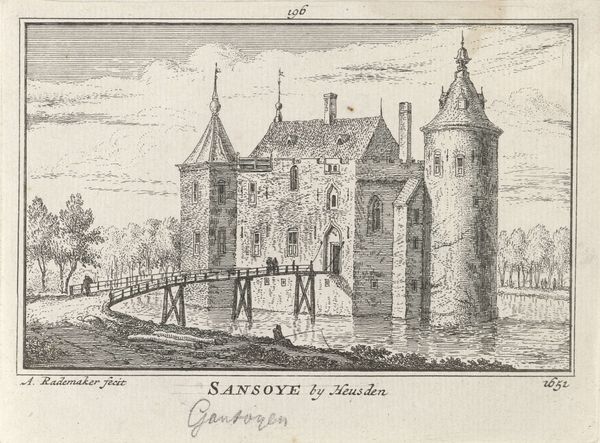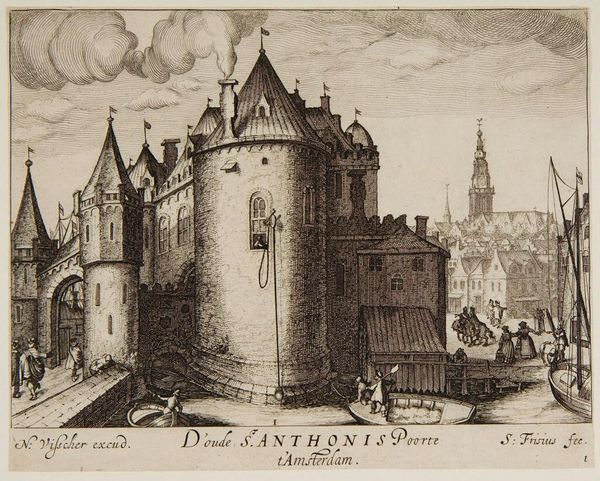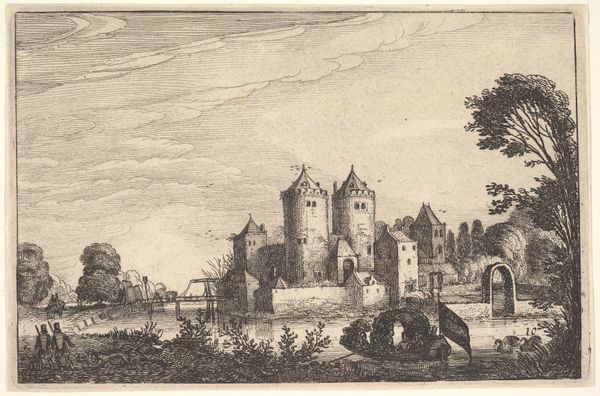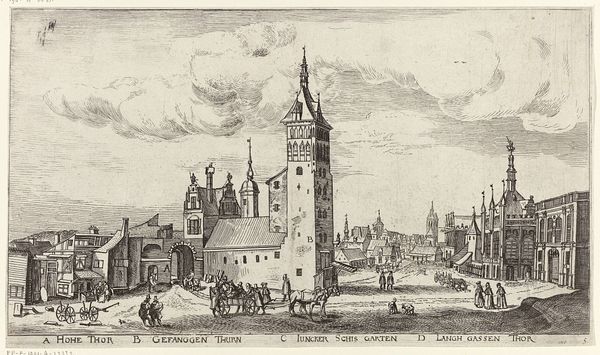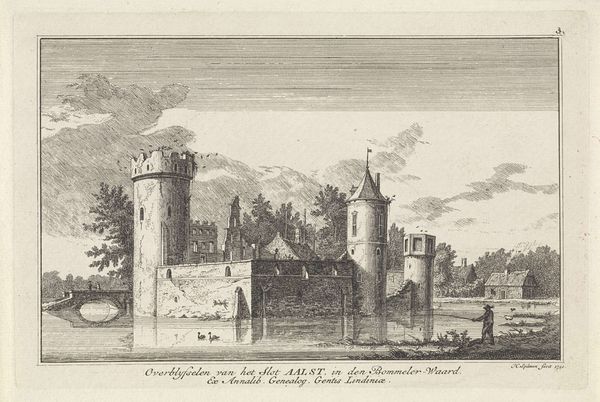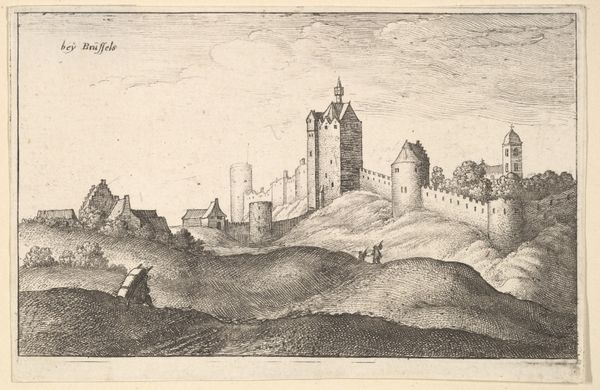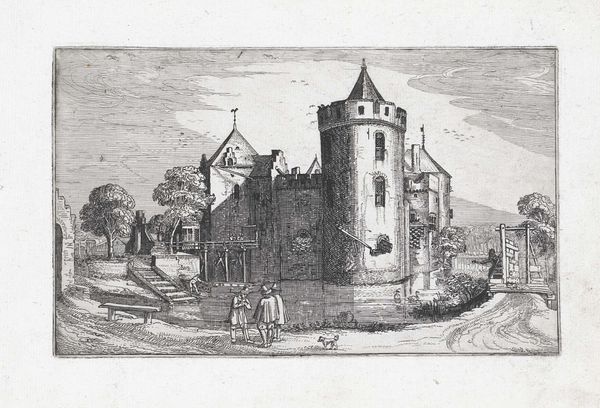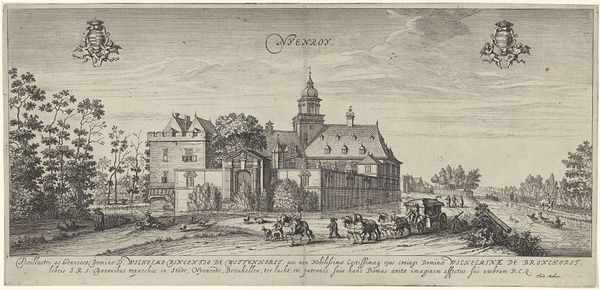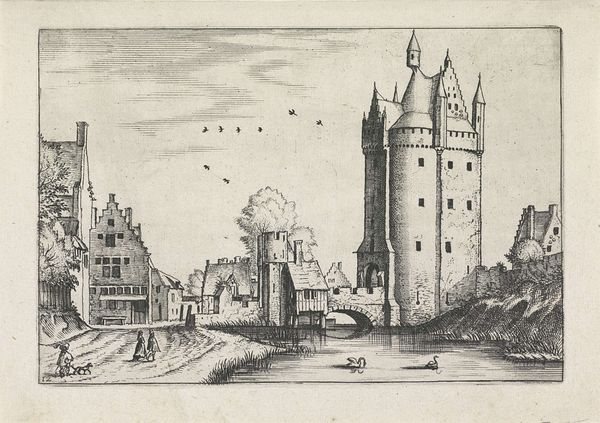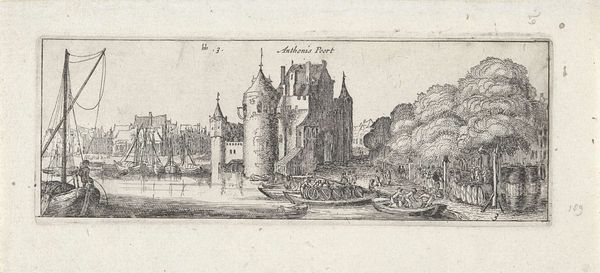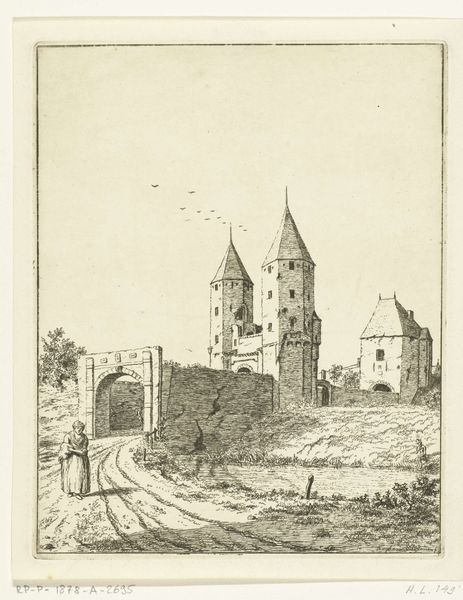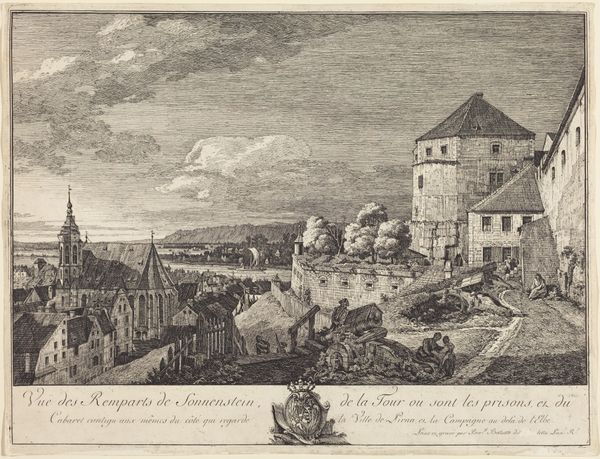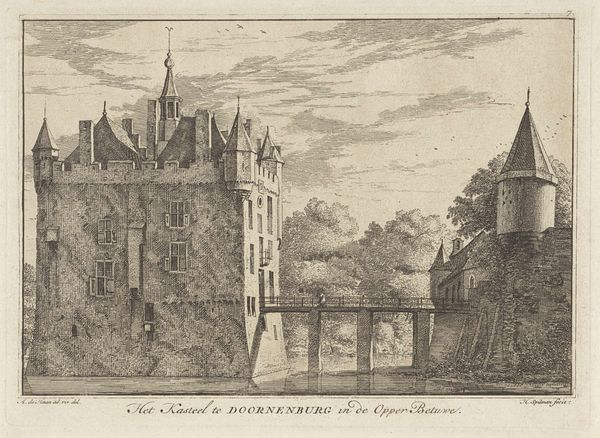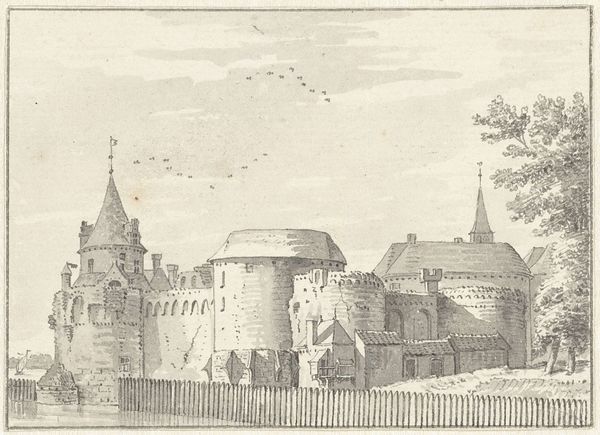
print, engraving
#
dutch-golden-age
# print
#
landscape
#
cityscape
#
engraving
Dimensions: height 153 mm, width 206 mm
Copyright: Rijks Museum: Open Domain
Editor: Hendrick Hondius' "Herfst," or "Autumn," made between 1644 and 1720, is an engraving. It feels so precise, so detailed, almost like a memory carefully preserved. What stories do you see embedded in this landscape? Curator: The cityscape itself, rendered with such meticulous detail, is more than just a place; it's a vessel of collective memory. The castle, prominently featured, suggests a longing for stability and order amidst change – perhaps a reflection on the shifting political or social landscapes of the Dutch Golden Age? Consider the flight of birds, like an allegory, underscoring that transformation and passage of time, but pointing beyond the single season? Editor: The birds do draw my eye upward, yes. So you’re saying these carefully placed objects carry symbolic weight? Curator: Precisely. The choice of 'Autumn' itself points to decline and harvest, the culmination of effort. Notice how Hondius contrasts the imposing architecture with the smaller figures walking along the path. How might this juxtaposition reflect ideas about human activity set against the backdrop of history? The stream perhaps symbolises constant flux, whilst the fortifications project stability. Editor: That makes so much sense! The detailed rendering of the stones really emphasizes endurance. It’s fascinating how much meaning is packed into such a small print. Curator: And the act of engraving, reproducing the image, helps disseminate not just an aesthetic view but also the values associated with the depicted subject across time and space, which itself builds into cultural memory, wouldn’t you agree? Editor: Absolutely. Seeing this engraving, I feel more connected to the past and also how certain images maintain importance over centuries. Curator: Indeed. It encourages us to ponder the symbols that shape our perceptions of time, landscape, and cultural identity.
Comments
No comments
Be the first to comment and join the conversation on the ultimate creative platform.
